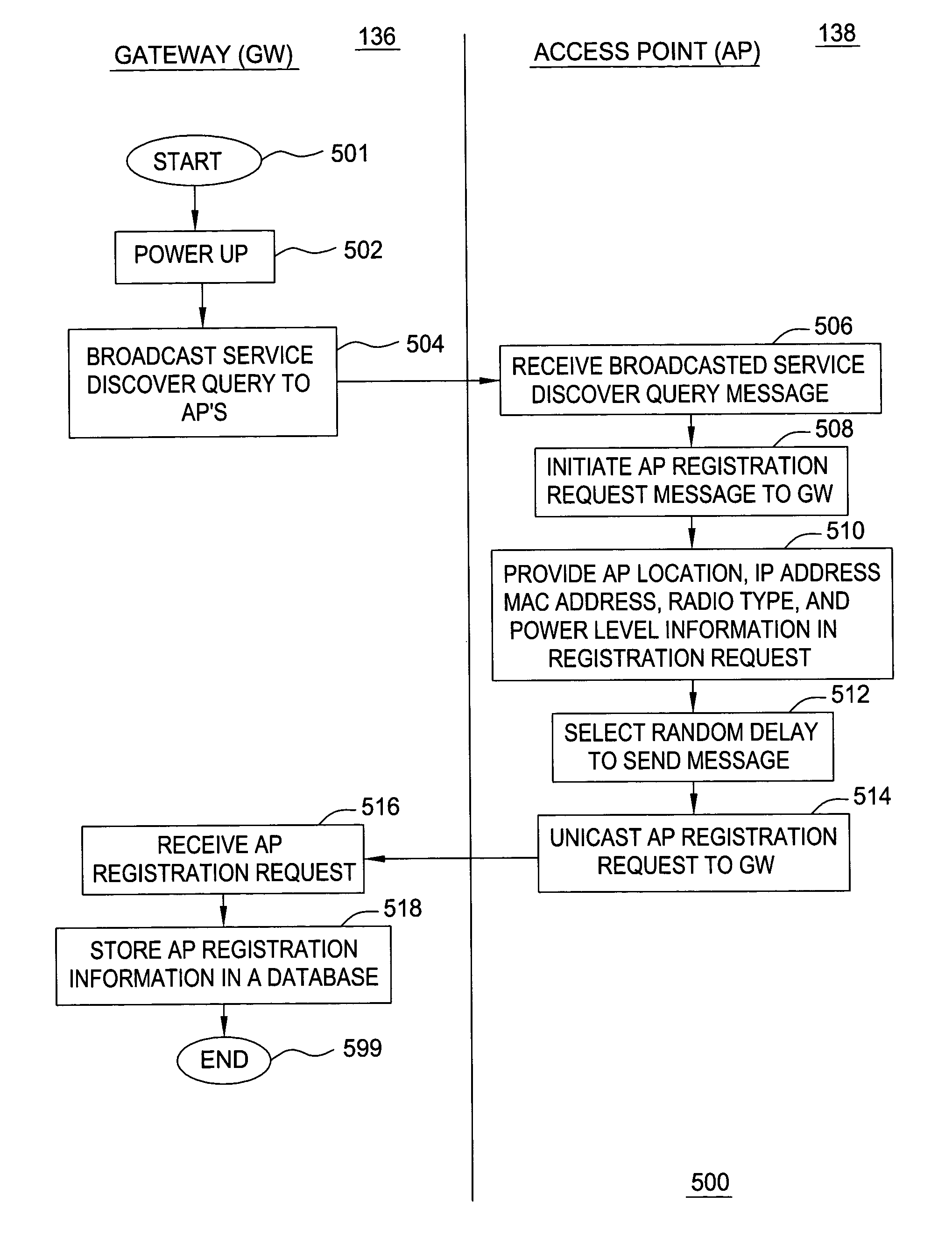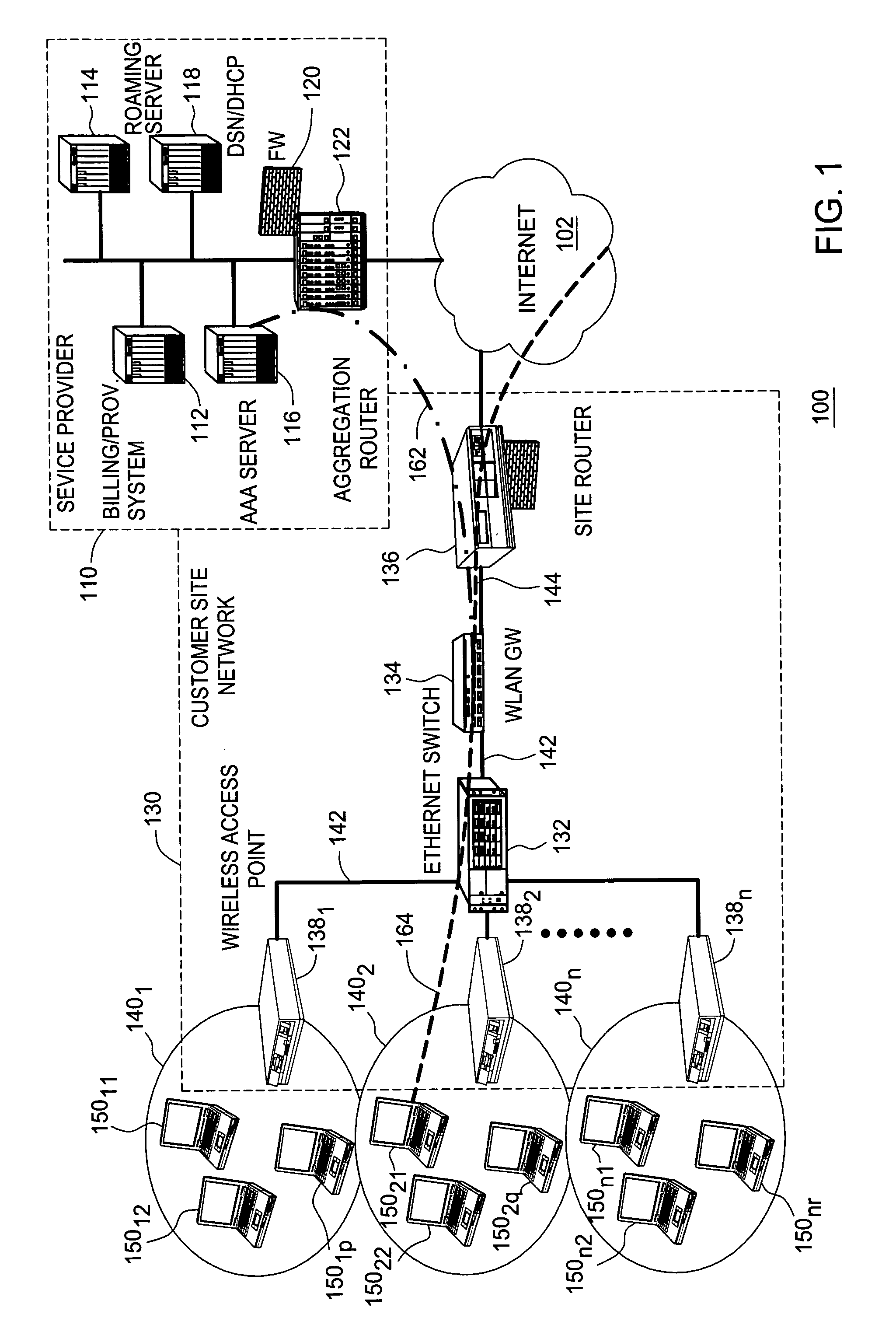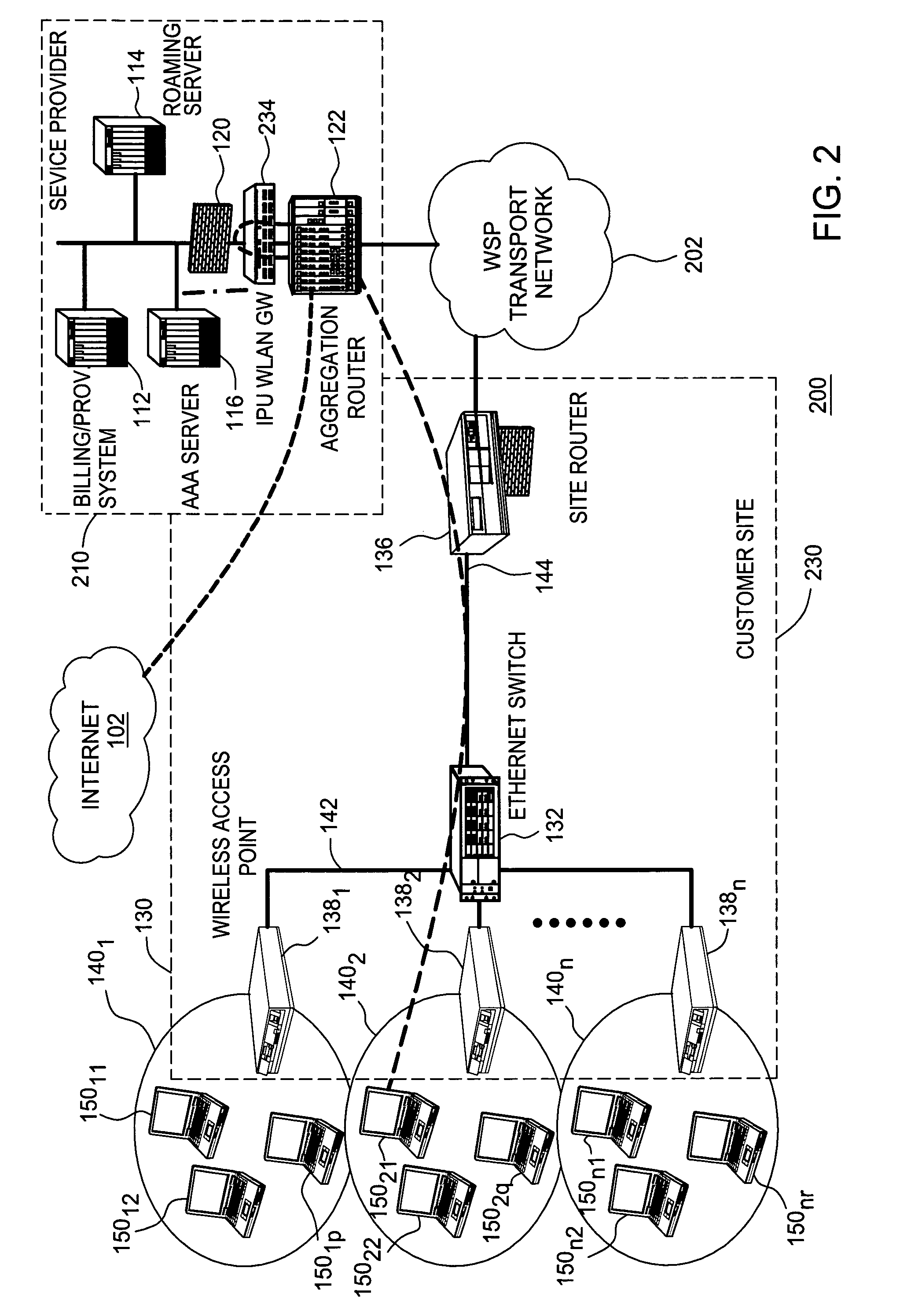Communications protocol between a gateway and an access point
a communication protocol and gateway technology, applied in the field of wireless local area networks, can solve the problems of time-consuming and expensive, manual configuration of each access point, and access point providing no quality of service (qos) related features for an end user
- Summary
- Abstract
- Description
- Claims
- Application Information
AI Technical Summary
Problems solved by technology
Method used
Image
Examples
first embodiment
[0020]FIG. 1 depicts a block diagram of a wireless network 100 suitable for use in the present invention. In particular, the exemplary wireless network 100 is a decentralized network comprising a wireless service provider 110, a customer site network 130, a plurality of mobile hosts 15011 through 150nr (collectively mobile hosts 150) and a public network, such as the internet, 102. The mobile hosts 150 communicate with the customer site via wireless communications, illustratively under the 802.11(a), 802.11(b), 802.11(g), Bluetooth standards, among other wireless communication standards. The customer site network 130 typically comprises an Ethernet based network (e.g., fast Ethernet) and communicates with the service provider 110 via a gateway over a high speed communications network, such as a T-1 or T-3 wired carrier lines, or digital subscriber lines (DSL), such as Asymmetric DSL (ADSL), High bit-rate DSL (HDSL), and the like.
[0021] The service provider 110 comprises a billing / pr...
second embodiment
[0028]FIG. 2 depicts a block diagram of a wireless network 200 suitable for use in the present invention. The network 200 of FIG. 2 is a centralized network having the same structure as the network of FIG. 1 except that the gateway 134 is now installed as part of the service provider equipment 110, as opposed to the customer site network 130. In particular, the billing / provisioning server 112, AAA server 116, and IP roaming server 114 are coupled to the gateway 234 via the firewall 120. The gateway 234 is coupled to the Internet 102 and a wireless service provider transport network 202 via the aggregation router 122. In one embodiment the wireless service provider (WSP) transport network 202 may be a hybrid fiber co-axle (HFC) network, an optical fiber network, among other transport networks. The customer site 230 illustratively comprises the access points 1301 through 130n, which are coupled to the Ethernet switch 108, as discussed above with respect to FIG. 1. The Ethernet switch ...
third embodiment
[0076]FIG. 9 depicts a block diagram of a wireless network 900 suitable for use in the present invention. The network comprises at least two gateways (e.g., gateways 1341, and 1342) each having at least one access point 138 coupled thereto, as discussed above with respect to FIGS. 1 and 2. For example, the first gateway 1341 is coupled to first, second and third access points 1381, 1382, and 1383 illustratively via Ethernet wiring 9021. Similarly, the second gateway 1342 is coupled to fourth and fifth access points 1384 and 1385 illustratively via Ethernet wiring 9022. The first and second gateways 1341 and 1342 are coupled to the Internet 102 via the customer site local area network (LAN) 130. It is noted that the exemplary gateways 1341, and 1342 are illustratively coupled to the access points 138 and LAN 130 via Ethernet wiring, or any other high-speed communications medium, as discussed above with respect to FIGS. 1 and 2. Furthermore, the first and second gateways 1341 and 1342...
PUM
 Login to View More
Login to View More Abstract
Description
Claims
Application Information
 Login to View More
Login to View More - R&D
- Intellectual Property
- Life Sciences
- Materials
- Tech Scout
- Unparalleled Data Quality
- Higher Quality Content
- 60% Fewer Hallucinations
Browse by: Latest US Patents, China's latest patents, Technical Efficacy Thesaurus, Application Domain, Technology Topic, Popular Technical Reports.
© 2025 PatSnap. All rights reserved.Legal|Privacy policy|Modern Slavery Act Transparency Statement|Sitemap|About US| Contact US: help@patsnap.com



